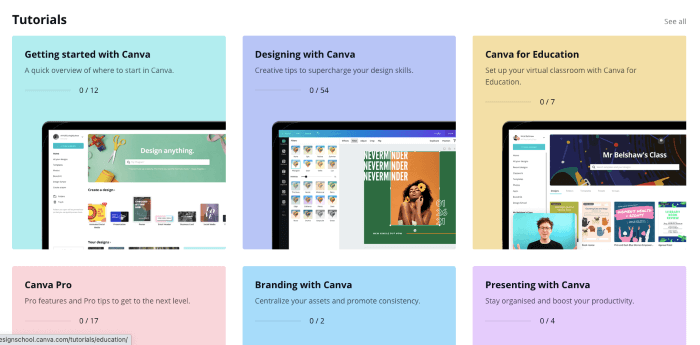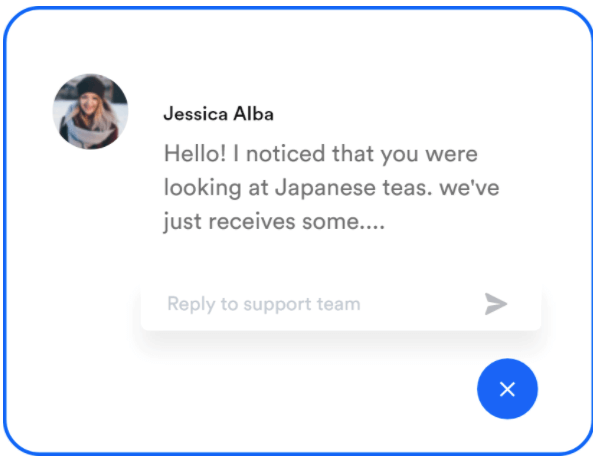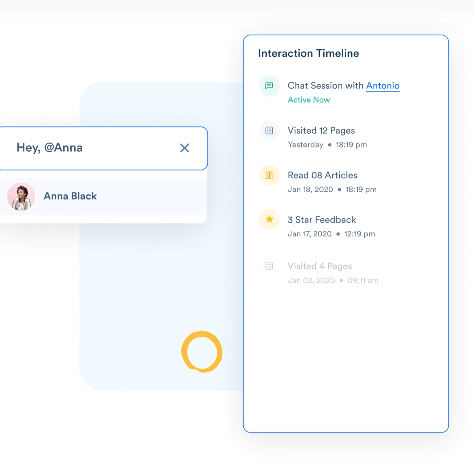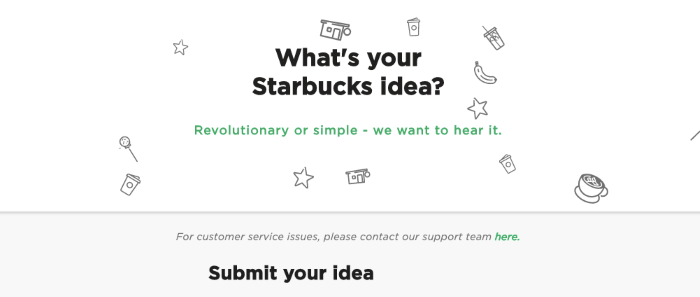Here’s How You Can Use Your Customer Service for Improving Your Marketing ROI
Today, many companies are moving beyond customer experience to create a culture of customer success. This means, besides focusing on delightful user experiences, brands are also helping their customers derive maximum value, converting them into loyal fans and positive mouthpieces for business. Such a strategy not only adds to a company’s bottom line but also helps in customer acquisition.
We know that a majority of people trust online reviews and rely on recommendations from friends and family more than advertising. Unfortunately, customers also use social media to share poor brand experiences, which can hurt a brand’s reputation immensely. If we put it down in numbers, a negative review can drive away 22% of prospects, while more than three negative reviews can increase the lost customers to 70%.
But there’s a way to turn negative reviews into a competitive advantage:
According to Richard Branson, “A complaint is a chance to turn a customer into a lifelong friend.” He adds: “At Virgin, we think that if we address a complaint well, and even involve the customer in the solution, it brings customers closer to our brand.”
A famous story goes that a customer in first class had a terrible experience with an Indian-themed meal on a flight. His letter to Richard was funny and poignant, with graphic descriptions of the food on the menu.
However, the vital part of the story is not the letter but Richard Branson’s response, who invited the passenger to help rehaul Virgin’s in-flight menu and even offered him a job in the airline’s culinary council.
The takeaway?
Marketing can help you acquire new customers, but customer service can help you win over upset customers – and the combination of customer service in marketing can take your business soaring through delightful user experiences and timely support.
Customer Service for Marketing: A Match Made in Heaven
In the age of omnichannel technology, customers no longer see your brand in siloes. So, if Hannah sees a fantastic promotion on your page, she is likely to call up support for more information because she does not see marketing and customer service as two different functions.
Similarly, when Hannah contacts support for information, she expects the support agent to inform her about any ongoing offers, what product or service is best suited for her, and how she can get the maximum value out of her relationship with the brand.
And, if your customer service team can dispense this information, you have won a customer for life in all probability.
Convinced? Here are some tips to turn around your business by employing customer service in your marketing strategy:
#1: Use Your Knowledge Base for Marketing and Engagement
A knowledge base is imperative for most companies relying on continued business from existing customers in addition to onboarding new ones. The reason is that, as your customer base grows, it becomes challenging to provide qualitative support to every customer. However, you can still be proactive by having a knowledge base software in place to guide users on their product or service journey.
But did you know that a knowledge base can serve multiple purposes, apart from revolutionizing your customer service? Take the example of Canva that hacked its growth with unique content to empower its users by improving their designing skills.
Canva’s blog, Design School, serves as a robust knowledge base for both beginners and professionals looking for design tips and inspiration. The variety of content is phenomenal, ranging from short certified courses to video tutorials and articles on resume writing, personal marketing, brand designing, unlocking creativity, and more.
All the resources are free to use, adding immense value to the user experience while also acting as invaluable marketing tools.
#2: Drive Engagement through Customer Service
Technologies like outsource live chat operators help you connect with prospects and customers in real-time while they look at your product or service online, opening a window for engaging conversations.
However, the role of live chat has traditionally been restricted to customer support. But many brands are breaking out of this mold and employing live chat effectively as a marketing and engagement tool. For example, it is possible to use website triggers for sending personalized messages to connect with users via live chat.
Say you were browsing a particular site for artisanal teas, and just as you were about to leave, you received the following message:
More chances are that you’d have stop and changed your mind about abandoning the site and perhaps even ended up buying from the new range of teas if it matched your taste.
The above image shows the kind of information your support agents receive from advanced live chat software for every visitor on the site and can actively use it to personalize conversations and boost user engagement.
#3: Using Customer Generated Content for Marketing
Your customer service team is the one team in your company that’s always in touch with your end-users. Therefore, they are vital in resolving user issues and adept at identifying customer success stories that can be transformed into effective marketing materials.
For instance, your BPO customer service team is perhaps already tracking your social media mentions for helping users proactively. Through this process, they are likely to come across several unsolicited customer reviews about your site on various blogs and forums that can be highlighted for creating a positive brand image.
Starbucks, known for its exceptional quality and service, uses customer feedback to collect new brand ideas. To provide feedback, customers can chat with Starbucks representatives on the official website or send an email detailing their experience.
Furthermore, Starbucks has a dedicated page for users to submit their ideas where they can leave feedback on what they’d like to see as a product or service from the American coffee giant.
According to a source, the page had generated over 70,000 ideas directly from consumers within a year, and approximately 300 of these ideas have been implemented by Starbucks to drive customer satisfaction.
Another idea you can consider is turning recurring customer issues or complaints into self-help tutorials and blogs to reduce the burden on your support staff while also improving your site’s content that will eventually boost your visibility on search engines.
The Wrap
Using customer service for marketing is not a new concept, but advanced technologies have created new opportunities for customer service agents to contribute to your marketing ROI effectively. As a result, there are several ways to utilize customer service for marketing your products and services, but the ideas outlined above are perhaps the easiest to incorporate and deliver proven results. You may try incorporating a couple of these strategies into your customer service and see your marketing ROI soar.
Author bio:
Ashwini Dave
Ashwini is passionate about Business, Entrepreneurship, E-commerce, emerging technology, and Digital Marketing. She is working with Acquire as a digital marketing expert. She is a free soul and adventurous scholar who spends her free time with herself, loved once, music, as well as watching & playing sports. She is ocean addicted and on roads being a thrill-seeking traveler to get new experiences as she looks at
life as our very own works of art.
Twitter: https://twitter.com/AshwiniDave1
Linkedin: https://www.linkedin.com/in/ashwini-dave/












